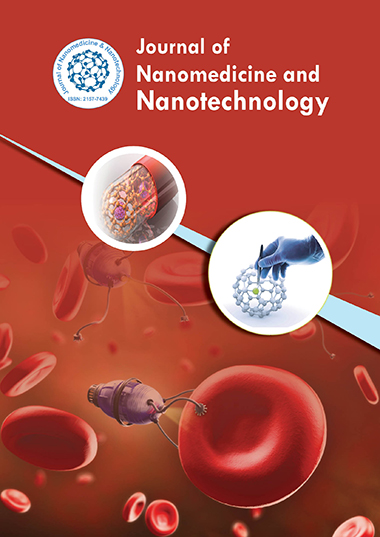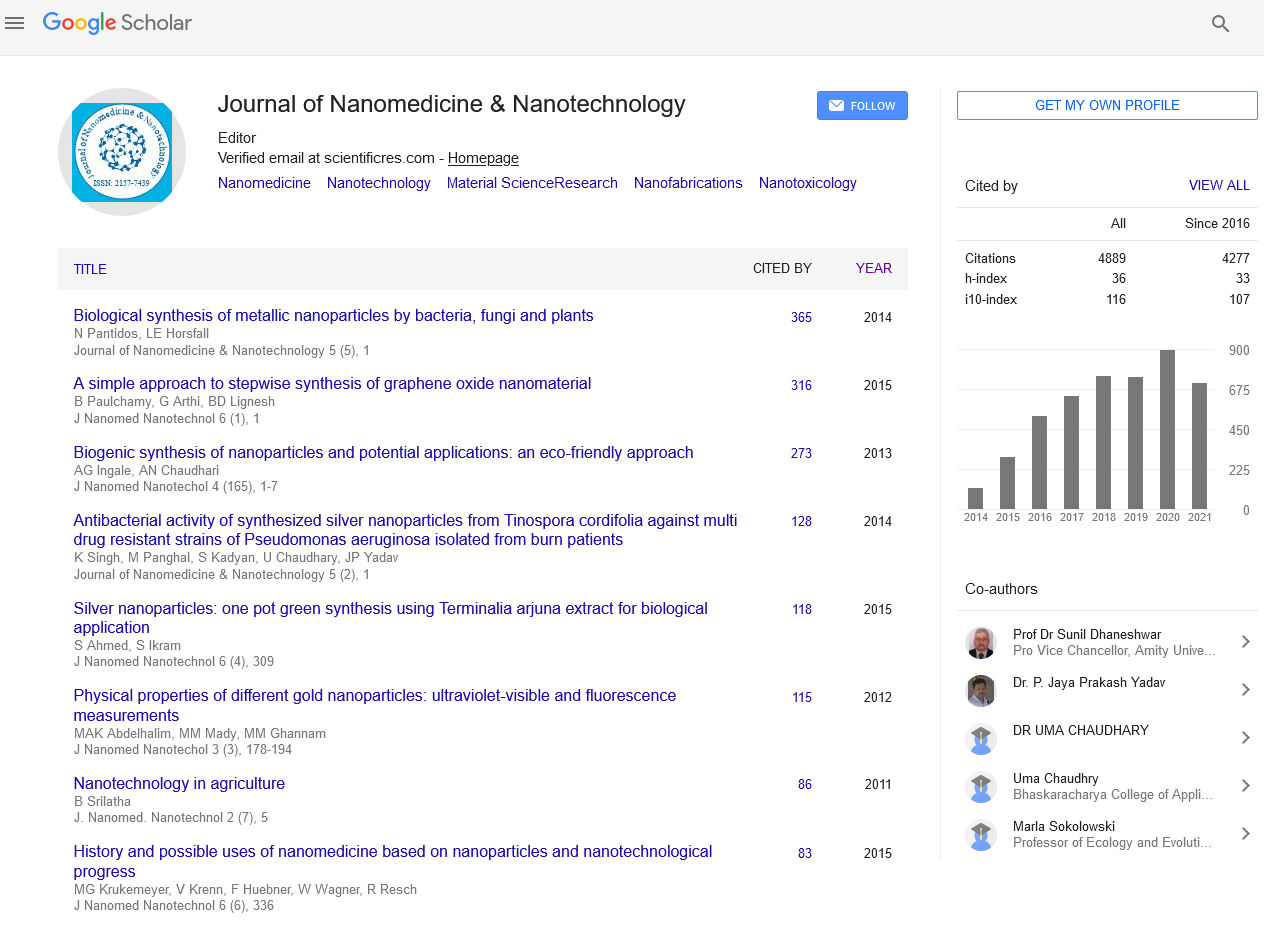Indexed In
- Open J Gate
- Genamics JournalSeek
- Academic Keys
- JournalTOCs
- ResearchBible
- China National Knowledge Infrastructure (CNKI)
- Scimago
- Ulrich's Periodicals Directory
- Electronic Journals Library
- RefSeek
- Hamdard University
- EBSCO A-Z
- OCLC- WorldCat
- SWB online catalog
- Virtual Library of Biology (vifabio)
- Publons
- MIAR
- Scientific Indexing Services (SIS)
- Euro Pub
- Google Scholar
Useful Links
Share This Page
Journal Flyer

Open Access Journals
- Agri and Aquaculture
- Biochemistry
- Bioinformatics & Systems Biology
- Business & Management
- Chemistry
- Clinical Sciences
- Engineering
- Food & Nutrition
- General Science
- Genetics & Molecular Biology
- Immunology & Microbiology
- Medical Sciences
- Neuroscience & Psychology
- Nursing & Health Care
- Pharmaceutical Sciences
Labeling cells with fluorinated silicon nanoparticles for targeted 19F-MRI and Fluorescence Imaging
15th World Medical Nanotechnology Congress
October 18-19, 2017 Osaka, Japan
Yuqi Yang, Sha Li and Shizhen Chen
Chinese Academy of Sciences, China
Scientific Tracks Abstracts: J Nanomed Nanotechnol
Abstract:
As a noninvasive molecular imaging modality, optical imaging provides high sensitivity and specificity but poor tissue penetration depth. On the contrary, MRI has high spatial resolution in deep tissue, but it suffers the drawbacks of low sensitivity. The combination of MRI and optical imaging, which takes advantages of both modalities, has received widespread attention in biological and medical application. Compared to conventional 1H-MRI, 19F-MRI displays an intense sensitivity (0.83 relative to 1H) and negligible background signal. Herein, we report a one-pot microwave synthesis of a functionalized 19F CA, fluorinated silicon nanoparticles (19F-SiNP), for targeted detection of A549 lung cancer cells. Moreover, based on the quantum effects of the nano-sized nanoparticles, the 19FSiNP can also act as a label free dye for ultracontrast fluorescent imaging. In vitro and in vivo results shows that the peptide-conjugated 19FSiNP can specifically detect A549 cells for dual 19F-MRI and fluorescence imaging. Such functionalized 19FSiNP can also be labeled to other cancer cells by replacing the targeting group, providing a handy and reliable way for targeted dual-model imaging.
Biography :
Yuqi Yang received her PhD in 2015 from Central China Normal University, and then joined Wuhan Institute of Physics and Mathematics as an assistant proferssor. Dr. Yang’s study focuses on multi-modality contrast agents, especially specializes in nanomaterial-based agents for molecular imaging of tagrted cancer cells.


